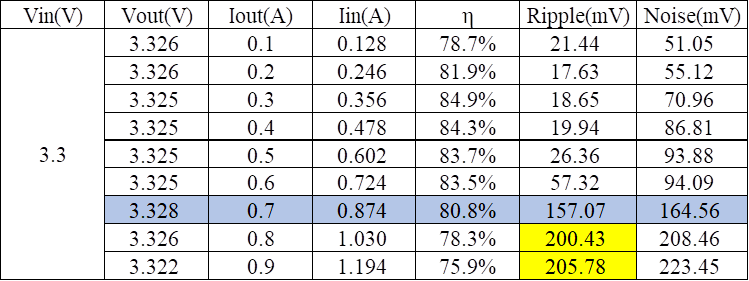When we use TI TPS82130 to output - 3.3V, we find that Ripple increases sharply from 57.32 mV to 157.07 mV when the load current changes from 0.6A to 0.7A.
The test results are as follows:
Ripple's waveform also changed significantly:
If C170.1uF is removed from the above image, Ripple will initially become smaller, but will gradually recover to a large extent.
If C170 is changed to a 22uF, Ripple can be controlled relatively small.
Please confirm:
1. What's the principle of Ripple getting bigger at 0.7A? How can it be smaller?
2. The measured efficiency is about 80.8% at 0.7A. Is there an optimization scheme to improve it?




